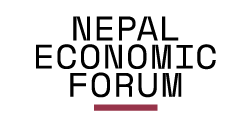Introduction
The concept of libraries has changed over time. Over the decades, libraries have evolved from being mere repositories of books and knowledge to vibrant community hubs offering educational, cultural, and digital services. With the advancement of technology and the rise of remote work and digital nomadism, having accessible public spaces to gather and be productive is more important than ever. In many countries, with this realization, libraries have already transformed into inclusive and interactive community spaces. Yet in Nepal, they are still often seen as optional rather than essential. Overshadowed by underfunding, outdated infrastructure, and the rise of digital alternatives, their societal role has been significantly diminished.
Current State of Libraries in Nepal
Libraries once held great value in Nepal, albeit accessible only to the ruling elite. During the Rana regime, the general public was forbidden from accessing libraries out of fear that education would lead to rebellion. Opening a public library then was considered illegal and punishable. Thus, until 1950, only 25 public libraries had been established. In 1928 or 1931, the great poet Laxmi Prasad Devkota, along with 46 other youths, attempted to establish a library. Before it could be opened, however, all of them were arrested and imprisoned, in an incident also known as the Library Parva or the Library Scandal. Despite such obstacles, some libraries were eventually established by the public, showing the power and importance libraries once held. Sadly, their significance has since diminished.
Today, libraries are not illegal but quite scarce, especially in rural areas. According to a survey conducted by READ Nepal, Shanti Volunteer Association, and the Ministry of Education, Science, and Technology, Nepal has a total of 928 libraries across its seven provinces, as of 2022. However, their distribution reveals a significant urban-rural divide. Bagmati Province, which includes the Kathmandu Valley and is the most urbanized region, leads with 253 libraries, which is more than any other province. In contrast, Karnali Province, known for its remote and mountainous terrain, has only 27 libraries. Thus, many people must travel long distances, and some cannot access libraries at all. This uneven distribution showcases the limited access to educational and learning resources in rural regions compared to urban centers, which creates a large disparity in access to knowledge.
Following the fall of the Rana regime, libraries had begun to flourish, driven by the belief that everyone had the right to knowledge and education. That led to many types of libraries being established, including national libraries, academic libraries, public libraries, community libraries, school libraries, and special libraries. However, despite this network, Nepal’s libraries struggle to meet the needs of a growing population and changing times. While major educational institutions offer library services to students, these are often limited by outdated infrastructure, insufficient resources, and poor digital access. Many public libraries suffer from similar issues. Operating on minimal budgets and relying heavily on donations, their collections often consist of outdated textbooks, and internet services are slow or unavailable.
Many libraries were also affected by the 2015 earthquake that shook Nepal and left much of the infrastructure damaged. Following the earthquake, despite their historical and educational value, public libraries in Nepal suffered from neglect and lack of investment. One example is the Kaiser Library in Kathmandu, established in 1907 and home to over 50,000 books. Although assessed as restorable, no retrofitting and repair had been carried out until 2024. Similarly, the Nepal National Library, which was housed in the former Rana residence at Harihar Bhawan, was declared structurally unsafe and moved to a temporary space. Plans to build a new facility in Jamal were made but then stalled in 2020 and only resumed in 2022. These cases reflect a broader pattern that library restoration and development remain low on the government’s priority list, with insufficient funding and delayed action even in the capital, let alone in rural areas.
Moreover, unlike international norms, libraries in Nepal are mostly used by students preparing for competitive exams or university assignments. Freelancers, professionals, the elderly, and young children rarely engage with them due to a lack of awareness or suitable services. This results in libraries being a missed opportunity in Nepal’s urban and social development.
The Evolving Global Perspective: Libraries as Third Spaces
We live in a fast-paced world, where people are constantly trying to learn and achieve more. This often leads to burnout, making it essential to have spaces or tools to pause and refocus. Thus emerged the concept of the ‘third space.’ The term was coined by American urban sociologist Ray Oldenburg to describe places outside the home (first place) and the workplace (second place) where people connect and build community. Third places are where people can hang out with friends, bump into acquaintances, or meet strangers – spaces that nurture connection and dialogue.
In today’s world of digital nomads and remote work, such spaces are increasingly important. Given this, libraries are the ideal third space, offering inclusive environments for people of all ages and backgrounds. Third spaces are crucial for mental well-being, social cohesion, and civic participation – especially in rapidly urbanizing societies like Nepal.
Third spaces may look different around the world. In the United States, for instance, coffee shops and bars are among the most common third spaces. These venues serve multiple functions. They are social gathering spots, performance venues, and even alternative workplaces. However, purchasing something is often an unspoken requirement, making such spaces less accessible and undesirable to everyone. But free third spaces also exist. Parks and public libraries are some of the best places to meet people or spend time without spending money. Over time, with this realization of the need for such areas, libraries have become increasingly popular third spaces. Open and free to the public, they offer quiet retreats from the noisy outside world and a place to focus, read, or work productively, without the pressure or need to buy anything.
Thus, globally, libraries have evolved beyond their traditional roles. In Auckland, New Zealand, for instance, libraries are dynamic, multifunctional spaces. The Auckland Central City Library, for instance, attracts not only students and readers but also remote workers, job seekers, tourists, and creatives. It offers co-working areas, free Wi-Fi, and various cultural events, redefining the public library experience. Similarly, in Helsinki, Finland, the Oodi Library is a stunning example of modern public design. Equipped with recording studios, 3D printers, and collaborative spaces, Oodi draws thousands of visitors every day. Likewise, Singapore’s Library@Orchard, located inside a shopping mall, attracts young professionals and creatives with its minimalist architecture, flexible seating, and interactive digital resources. Understanding the need for these spaces, many countries have even implemented strong library policies to ensure libraries are sustainable, innovative, and vital parts of their cultural and educational landscapes.
The Need for Similar Spaces in Nepal
Nepal is at a critical juncture, with its demographic window now open and able to enjoy the demographic dividend for about 40 to 60 years. According to the United Nations Population Fund (UNFPA), approximately 28% of Nepal’s population is under the age of 15 as of 2024. Thus, there is a growing number of students, job seekers, and freelancers who need affordable and quiet workspaces. At the same time, remote work is on the rise, creating a demand for spaces with stable internet and comfortable work environments.
Libraries can fulfill this role. Well-equipped libraries can offer free or low-cost access to digital tools, books, and collaborative areas. They can host events, workshops, and exhibitions, fostering creativity, innovation, and lifelong learning. An example is the National Library for Children and Adults in Seoul, which combines elements of play, creativity, and technology to engage both children and adults. Facilities like VR, drawing rooms, and free resources reflect how libraries can be inclusive, dynamic spaces. Nepal can follow this model by redesigning libraries as community-centered learning hubs and integrating modern tools and inclusive services to empower youth, support education, and foster innovation.
Libraries’ value goes beyond education. They contribute to inclusivity, community development, and civic engagement. Modern libraries are powerful drivers of local economic growth, playing a crucial role in business development, workforce upskilling, and community revitalization. They offer resources and spaces for young professionals and entrepreneurs to research, network, and launch ventures. Beyond this, libraries also deliver a strong return on investment. For instance, in 2015, libraries in Texas generated USD 2.6 billion in benefits from a cost of USD 566 million. Additionally, libraries’ presence even boosts local businesses through increased foot traffic and incidental spending. In essence, libraries not only support lifelong learning, but also serve as engines of local economic prosperity. Thus, while Nepal’s development strategies often focus on infrastructure and economic growth, investing in soft infrastructure like libraries is equally important.
Conclusion
Libraries in Nepal remain an underutilized resource. As other countries redefine libraries to meet modern needs, Nepal too must reimagine these spaces. Investing in libraries as inclusive third spaces will support not only students and professionals but also enhance community engagement and social inclusion. A revitalized library network may be the missing piece in Nepal’s evolving public space ecosystem which is well worth investing in.
Anushka Shrestha graduated with a Bachelor's degree in Business Administration (International Hotel Management) from Stamford International University, Thailand. Her interest lies in tourism, hospitality and sustainable businesses. Currently, she works as a Research Fellow at Nepal Economic Forum (NEF).





